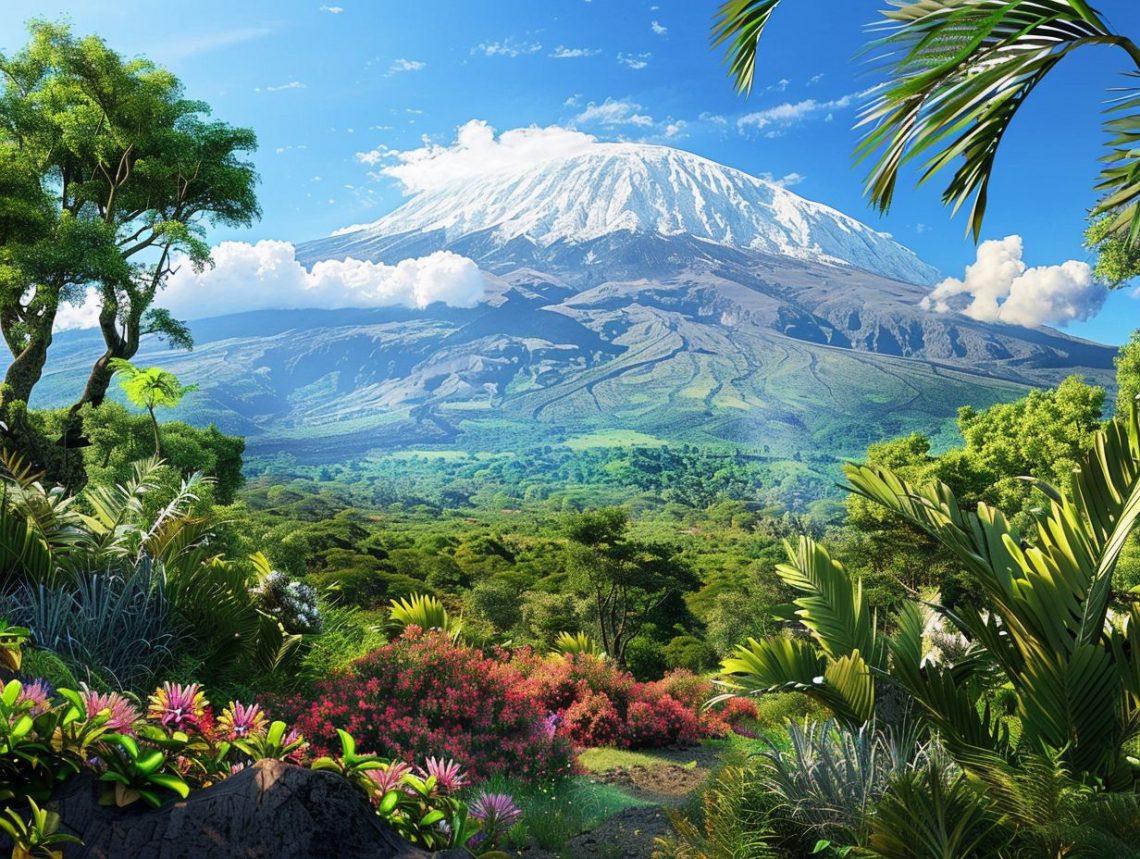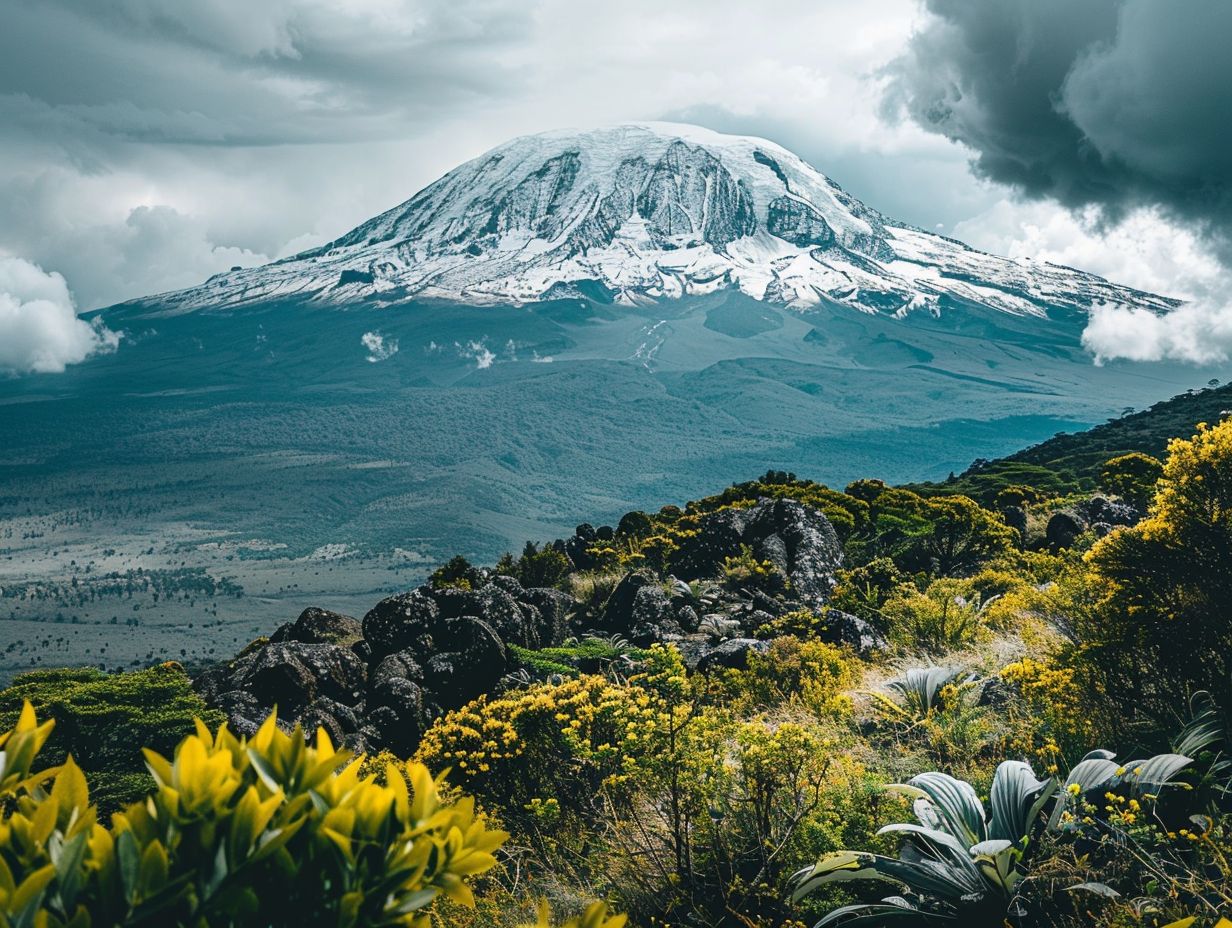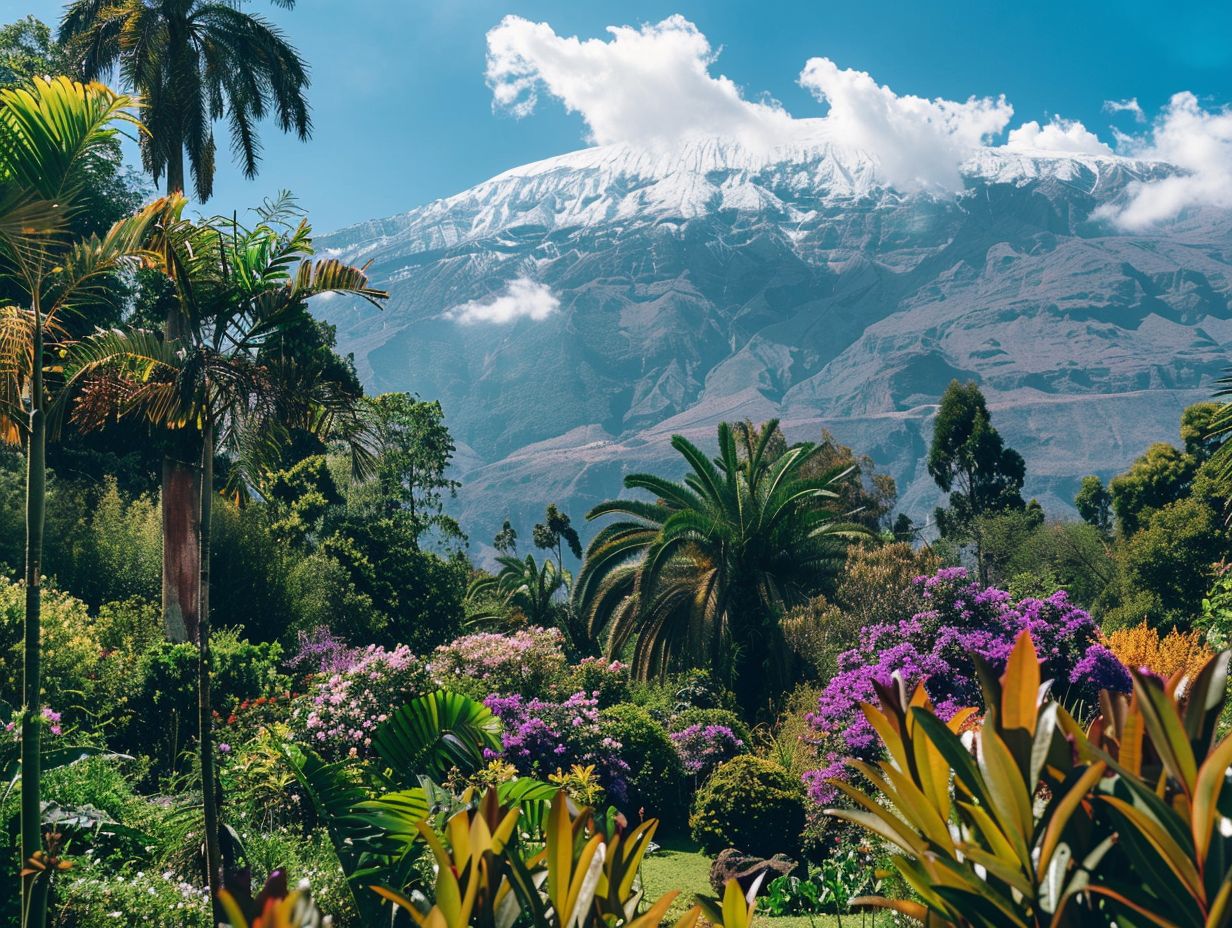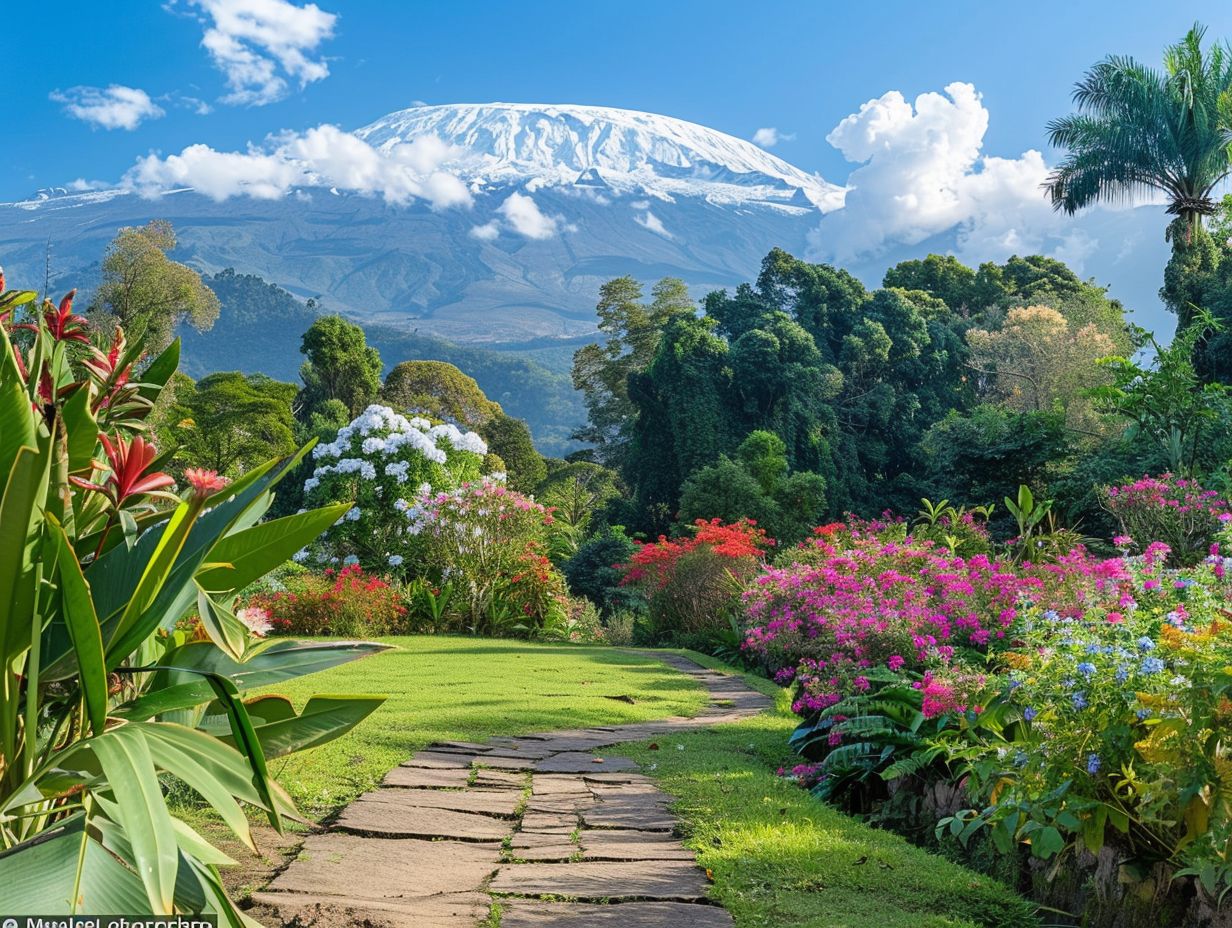
Is Kilimanjaro Worth It
Looking to challenge yourself and conquer one of the world’s most iconic mountains? Look no further than Mount Kilimanjaro.
As the highest mountain in Africa, Kilimanjaro offers a unique and diverse experience for climbers. From its varied ecological zones to the breathtaking views from the “Roof of Africa,” there is no shortage of reasons to make the journey.
But is Kilimanjaro worth it? In this article, we’ll explore the factors to consider, physical and mental preparation needed, costs and logistics, and what to expect on the climb.
Join us as we uncover the allure of Kilimanjaro and help you decide if this epic adventure is right for you.
Key Takeaways:

- Climbing Kilimanjaro is a unique and challenging experience, with diverse ecological zones and the opportunity to summit the highest mountain in Africa.
- Before deciding if Kilimanjaro is worth it, consider factors such as physical and mental preparation, costs, and the climbing experience.
- Proper training, acclimatization, and equipment are essential for a successful climb, and overcoming mental barriers is crucial for reaching the summit.
What Makes Kilimanjaro Unique?
Kilimanjaro stands out as a unique mountain for several reasons. It is not only the highest mountain in Africa but also offers a challenging climb to its majestic summit.
1. Highest Mountain in Africa
Kilimanjaro proudly holds the title of the highest mountain in Africa, making it a sought-after destination for mountaineers and adventurers.
Standing majestically in Tanzania, Kilimanjaro’s imposing presence is not only a physical marvel but also a symbol of strength and endurance.
Its snow-capped peak, Uhuru Point, rises above the East African plains, drawing in climbers from around the globe.
Kilimanjaro’s significance extends beyond its natural grandeur.
It serves as a focal point for local communities, with its lush slopes supporting diverse ecosystems and providing crucial water sources for the region.
This mountain is deeply embedded in the cultural and historical fabric of Tanzania, adding layers of significance to its already towering stature.
2. Diverse Ecological Zones
One of the striking features of Kilimanjaro is its diverse ecological zones, ranging from lush rainforests to alpine deserts.
Beginning the ascent from the dense rainforests at the mountain’s base, climbers find themselves enveloped in a world teeming with vibrant foliage and cascading streams.
As the altitude increases, the scenery transforms, revealing the stunning moorland with its unique flora adapted to the harsh conditions.
Moving further, the alpine desert greets adventurers with a stark yet mesmerizing landscape, characterized by vast stretches of arid terrain and surreal rock formations.
3. The Roof of Africa
Reaching the summit of Kilimanjaro, often referred to as the ‘Roof of Africa,’ is a momentous achievement and a dream for many climbers.
Standing at a towering height of 19,341 feet, the journey to Kilimanjaro’s summit is a test of physical endurance and mental strength.
Climbers traverse through diverse ecosystems, from lush rainforests to the stark alpine desert, experiencing a range of climates in a single ascent.
As climbers ascend higher, the air thins, and every step becomes a triumph over unfamiliar terrain and personal doubts.
The summit represents not just a physical peak but also an emotional one, where dreams are realized and limits are pushed.
Reaching the ‘Roof of Africa’ signifies conquering one’s fears and embracing a challenge that symbolizes the spirit of human determination.
Is Kilimanjaro Worth It?
Embarking on a Kilimanjaro climb is a decision that involves careful consideration of various factors to determine if the experience is truly worth it .
Physical and mental challenges play a significant role in shaping the Kilimanjaro expedition.
Tackling the changing altitudes, unpredictable weather conditions, and long hours of trekking requires resilience and determination.
The rewards of reaching the summit are unparalleled; the breathtaking views, the sense of accomplishment, and the camaraderie with fellow climbers create lasting memories.
The journey not only tests one’s physical endurance but also offers a powerful mental challenge, pushing individuals beyond their limits.
Considering how this climb aligns with personal goals and aspirations is crucial in making an informed decision about embarking on this remarkable adventure.
Factors to Consider
Before deciding whether Kilimanjaro is worth climbing, consider essential factors such as physical preparation, mental readiness, hydration strategies, and expert tips to ensure a successful and enjoyable expedition.
- Physical training plays a crucial role in preparing your body for the challenges of altitude.
- Building endurance, strength, and cardiovascular fitness is key.
- Mental resilience is equally important, as you will face obstacles that test your determination and perseverance.
- Hydration techniques are vital to combat the effects of high altitude and prevent altitude sickness.
- Remember to drink plenty of water and electrolyte-rich fluids to stay hydrated.
- Practical tips like packing light, acclimatizing properly, and choosing the right gear can significantly enhance your climbing experience.
Physical Preparation for Kilimanjaro

Physical preparation is essential for conquering Kilimanjaro’s challenging terrain and high altitude.
From rigorous training and fitness routines to acclimatization strategies and selecting the right gear, adequate physical readiness is crucial for a successful climb.
1. Training and Fitness
Effective training and physical fitness are key components of preparing for a Kilimanjaro expedition, helping climbers build endurance, strength, and resilience.
When preparing for a Kilimanjaro climb, it’s crucial to focus on a well-rounded fitness regimen that includes cardio, strength training, and endurance exercises.
To boost endurance, consider incorporating long hikes, runs, or cycling sessions into your weekly routine. High-intensity interval training (HIIT) can help improve cardiovascular fitness and stamina.
Strength training is equally important, as it helps build muscle mass and improves overall strength for the demanding ascent.
Include exercises like squats, lunges, push-ups, and core workouts to target different muscle groups.
Don’t forget about flexibility and balance. Yoga or Pilates can aid in preventing injuries and enhancing balance, essential for navigating the uneven terrain of Kilimanjaro.
2. Acclimatization
Acclimatization is a vital aspect, as it helps climbers adapt to the high altitude and reduced oxygen levels, reducing the risk of altitude sickness.
Efficient acclimatization involves adapting gradually to the changing conditions on the mountain.
Climbers can employ several strategies to mitigate altitude-related challenges, such as hydration maintenance, proper nutrition intake, and regulated pace during ascents.
One effective approach is to follow a gradual ascent plan that includes scheduled rest days at higher altitudes to allow the body to adjust.
This method optimizes oxygen uptake and minimizes the chances of altitude sickness.
3. Equipment and Gear
Choosing the right equipment and gear is crucial ensuring climbers are well-equipped to face varying weather conditions, rugged terrain, and high altitudes.
From proper footwear to essential trekking gear, the right equipment enhances safety and comfort during the expedition.
- In terms of clothing, layering is key on Mount Kilimanjaro. Go for moisture-wicking base layers, insulating mid-layers for warmth, and waterproof outer layers to shield you from rain and wind.
- Footwear plays a vital role in your ascent. Invest in sturdy, well-fitted hiking boots with ankle support to navigate the rocky paths.
- Backpacks should be spacious yet comfortable, allowing you to carry essentials like water, snacks, extra layers, and personal items.
- Essential camping gear includes a durable tent, sleeping bag rated for cold temperatures, sleeping pad for insulation from the ground, and a reliable headlamp.
- Don’t forget about safety essentials such as a first aid kit, sunscreen, sunglasses, and a whistle for emergencies.
- Proper gear maintenance before the climb can help prevent equipment failures on the mountain.
Mental Preparation for Kilimanjaro
While physical readiness is crucial, mental preparation is equally important for a successful Kilimanjaro climb.
Overcoming mental barriers, understanding the challenges ahead, and maintaining a positive mindset are key aspects of mental preparation for this demanding expedition.
1. Challenges and Risks
Climbing Kilimanjaro presents various challenges and risks, including altitude sickness, extreme weather conditions, and physical exhaustion.
Understanding these challenges and being prepared to face them is essential for climbers embarking on this arduous journey.
At an elevation of 19,341 feet, the altitude can affect climbers as they reach higher altitudes, causing symptoms ranging from mild headaches to severe altitude sickness.
The unpredictable weather on the mountain can change rapidly, from scorching sun to freezing temperatures and sudden storms, which can pose a serious threat to climbers’ safety.
2. Overcoming Mental Barriers
Overcoming mental barriers is a critical aspect of mental preparation, as the journey to the summit demands perseverance, resilience, and a positive mindset.
When embarking on such a challenging expedition, it is essential to have a mental toolkit ready to navigate through moments of doubt and exhaustion.
Setting realistic goals along the way can help break down the monumental task into achievable milestones, boosting confidence and motivation.
Practicing mindfulness techniques such as deep breathing exercises or visualization can aid in staying present and focused during arduous stretches of the climb.
Costs and Logistics of Climbing Kilimanjaro

The costs and logistics of climbing Kilimanjaro encompass various aspects, including permits and fees, accommodation options, transportation arrangements, and the choice between guided expeditions and self-climbing experiences.
Understanding these logistical elements is essential for planning a successful climb.
1. Permits and Fees
Securing permits and paying associated fees are essential, as climbers need to adhere to the regulations set by Tanzanian authorities and national park guidelines.
When embarking on the thrilling journey to conquer Kilimanjaro, it is crucial to navigate the permit application process with care.
Climbers must obtain permits from the Tanzanian National Parks Authority, which oversee the protected area where the mountain is situated.
These permits not only grant access but also contribute to conservation efforts and ensure sustainable tourism practices.
Understanding the fee structures associated with Kilimanjaro climbs is equally important. Fees vary based on factors such as the route chosen, group size, and nationality.
Compliance with regulatory requirements is non-negotiable and park regulations cover a range of aspects, from waste management to altitude sickness prevention.
By familiarizing oneself with these rules and following them diligently, climbers play a vital role in preserving the natural beauty of the mountain and its surroundings.
2. Guided vs. Self-Climbing
Choosing between a guided expedition and a self-climbing experience on Kilimanjaro impacts the logistical planning and overall climbing experience significantly.
Opting for a guided expedition ensures climbers have experienced guides who are well-versed in the terrain and can provide valuable insights.
These tours often include pre-arranged accommodations, meals, and equipment, simplifying the planning process for climbers.
In contrast, self-climbing allows individuals to set their own pace and challenge themselves without the constraints of a group itinerary or schedule.
3. Accommodations and Transportation
Arranging suitable accommodations and transportation is integral to the logistical planning, ensuring climbers have comfortable lodging options.
For accommodation choices, climbers can opt for anything from basic tented camps to luxurious lodges, each offering a unique experience.
Booking in advance is advisable, especially during peak seasons, to secure preferred options.
As for transportation logistics, it is crucial to arrange transfers from airports or nearby cities to the trailheads or starting points of the climb.
Many tour operators provide inclusive packages that cover these aspects, ensuring a hassle-free journey.
What to Expect on the Climb?
Climbing Kilimanjaro offers a unique adventure filled with diverse experiences, from navigating different routes and acclimatizing to changing altitudes.
As climbers ascend the majestic slopes, they are greeted by the surreal beauty of the Savannah below and the snow-capped peak above.
The varying landscapes, from lush rainforests to arid alpine deserts, provide a visual feast at every turn, keeping adventurers captivated throughout their journey.
Acclimatization becomes crucial as the altitude increases, with strategic stops allowing climbers to adjust to the thinning air and prevent altitude sickness.
Weather patterns can range from sunshine to snow, adding an element of unpredictability to the climb.
1. Climbing Routes and Difficulty Levels
Kilimanjaro offers various climbing routes with distinct difficulty levels, catering to a range of experience and fitness levels among climbers.
From the popular Marangu route to the challenging Western Breach, each route presents unique challenges and rewards for adventurers.
The Marangu route, also known as the ‘Coca-Cola route,’ is one of the most popular choices due to its gradual ascent and the option to stay in huts along the way.
In contrast, the Machame route, often referred to as the ‘Whiskey route,’ is known for its stunning scenery and diverse landscapes.
For those seeking a truly challenging climb, the Umbwe route provides a steep and direct ascent, demanding strong physical fitness and determination.
In contrast, the Lemosho route offers a longer, more gradual approach, providing excellent acclimatization opportunities and beautiful views of Kilimanjaro’s western glaciers.
2. Weather and Climate
Climbers encounter diverse weather patterns, temperature fluctuations, and climatic challenges as they ascend the mountain’s slopes.
Due to Kilimanjaro’s proximity to the equator, the mountain experiences unique weather conditions influenced by its varying ecological zones.
As climbers ascend, they encounter dramatic temperature shifts, going from the hot and humid rainforest base to freezing alpine conditions near the summit.
Managing these extremes requires careful packing of appropriate clothing – from lightweight, moisture-wicking attire for lower altitudes to insulated layers for higher elevations.
3. Wildlife and Scenery

Kilimanjaro’s ascent offers breathtaking wildlife encounters, with climbers traversing diverse landscapes teeming with unique flora and fauna, from lush rainforests to alpine meadows.
As climbers make their way through the lower reaches of the mountain, they are often greeted by colobus monkeys, and the vibrant colors of tropical birds flitting about.
The transition from the dense rainforests to the open savannah plains showcases a panorama of acacias and grasslands, where elephants and giraffes roam freely.
The diverse ecosystem of Kilimanjaro is a haven for wildlife enthusiasts, offering glimpses of buffaloes, leopards, and even the elusive black rhino.
Frequently Asked Questions
1. Is Kilimanjaro Worth It?
A: Yes, Kilimanjaro is definitely worth it! It is the highest mountain in Africa and offers breathtaking views and a challenging yet rewarding hiking experience.
2. What makes Kilimanjaro worth climbing?
A: Aside from being the highest mountain in Africa, Kilimanjaro also has diverse ecosystems, making it a unique and unforgettable experience. It also offers a sense of accomplishment for those who reach the summit.
3. How much does it cost to climb Kilimanjaro?
A: The cost of climbing Kilimanjaro varies depending on the route, tour operator, and level of comfort. On average, it can range from $1,000 to $4,000, not including flights and other expenses.
4. Is Kilimanjaro worth the physical challenge?
A: While climbing Kilimanjaro is a physically demanding activity, it is manageable for individuals with a moderate level of fitness. The experience and sense of achievement make it worth the challenge.
5. What is the best time to climb Kilimanjaro?
A: The best time to climb Kilimanjaro is during the dry seasons, which are from January to March and June to October. These months offer the best weather conditions and higher chances of reaching the summit.
6. What should I bring when climbing Kilimanjaro?
A: You should bring warm and waterproof clothing, comfortable hiking boots, a sleeping bag, and other essential items. It is also important to pack light as you will be carrying your own gear during the climb.